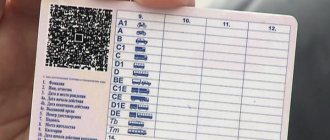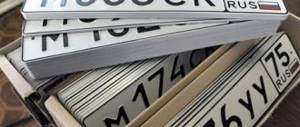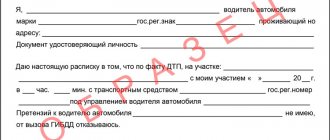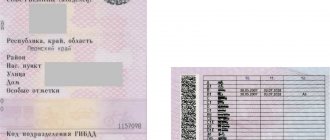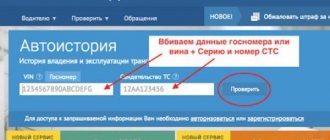Why might a car be impounded?
An arrest involves the imposition of a ban on the disposal or use of property belonging to the debtor (defendant, suspect, accused), and in some cases the seizure of such property.
A car, like any other property, can be subject to seizure. Accordingly, registration of transactions with it (for example, purchase and sale) while under arrest is impossible.
The court or bailiffs can impose an arrest. It should be understood that the seizure of property is not a punitive measure. The main purpose of the arrest is to ensure the execution of a court decision to collect the amount of debt from the debtor, confiscate property, etc.
The car will be released from seizure if the grounds for its imposition are removed. For example, there is no need to apply arrest if the debtor has fully repaid the amount of debt.
As for the reasons for the seizure, there may be several of them. The most common:
- the owner of the car has a debt on a loan, for utilities, etc., the collection of which is carried out by bailiffs according to a writ of execution;
- initiation of a criminal case against the owner for crimes, as an additional punishment, for which confiscation of property is provided;
- filing a civil claim against the owner for debt collection, damages, or if the subject of the dispute is the car itself.
Why is a visual inspection performed?
If the driver did not register a road accident, and the car is legally clean, then you will not find data about the accident in the databases. Legally, the car will be clean: no one contacted the insurance company, and the repairs were done at their own expense. If you do not understand cars, then it is better to completely check the car you are planning to buy.
Pre-sale inspection is an important thing before purchasing. It is better to entrust this matter to an independent expert who will professionally inspect the vehicle.
An accident or careless operation will certainly leave marks on the parts of the car, in the interior, and on the body. This will be visible even after a good and thorough repair. A professional will find hidden defects and malfunctions.
Professional verification includes the following procedures:
- Visual inspection.
- Check on the road.
- Diagnostics on a computer.
The first and last points determine the technical condition of the car. The expert uses instruments and tools, a computer, and operating experience. A computer check accurately identifies defects in the engine, wheel geometry, brake system and other components. A professional expert will feel the car while driving: faults and wear are detected by jerking and extraneous knocks.
Private firms offer the following services:
- Visual inspection.
- Interior check.
- Diagnostics of the engine, body, and other systems.
- Checking electrical equipment.
- Test drive.
- Report preparation.
- Ancillary services.
Problems and malfunctions of the car for sale can be found during a conversation with the seller. If the buyer intends to involve an independent expert, then most often the seller refuses the sale. An analysis of the vehicle may reveal its deplorable condition.
In this case, it becomes clear that the quality of such a car is low. If the seller does not want to check the old car, then it is better to refuse the purchase and look for another car . Otherwise, you will only waste time and money.
Recommendations from experts
If you decide to carry out the inspection yourself, then it is better to familiarize yourself with the nuances and use the following advice from professionals.
- During a test drive, release the steering wheel. If the car is in good condition, then the path of movement will be straight. Otherwise, the geometry of the wheels is broken, or there are other problems in the suspension or wheels.
- Check the complete set of documents for the car, whether there are factory keys. If the seller offers a tool kit, a spare tire and a jack along with the car, it means that he carefully preserved the equipment and handled the sale responsibly. But this does not yet guarantee the machine’s serviceability.
- If the seller has documents from the auto repair shop, study them carefully. The entire history of repairs will be visible there.
- Talk to the seller more, ask different questions. If he does not know the answers to all questions regarding the car, then you should be wary. You need to think carefully about whether to contact him or find another option. If everything is fine, then you can agree to invite an expert and ask him to drive along the road.
How to inspect the car yourself:
- Inspect the main components, check the level of technical fluids, fuel, and whether oil is leaking. On a dirty engine they will be visible, on a clean engine, run a sheet of paper over the seals after “gasping” at high speeds.
- Carefully inspect the condition of the lubricant and fluids. Their consistency should be uniform without impurities.
- Inspect electrical wires and tubes. If there are no sharp bends, breakdowns, or cracks, this is a positive factor. If you notice new parts and components installed, ask about it.
- Start the engine and listen to it for any unusual knocks or vibrations.
- Inspect the radiators of the climate system, engine cooling, and interior heater. They should be clean without damage to the ribs. If they exist, then find out about the reasons for their occurrence.
- Check the integrity of the mudguards.
Ways to check a car for arrest and restrictions
There are many services that allow you to obtain information about a car, fines, and transactions with it. Such information can be provided by both public authorities and private organizations. The most famous state information resources are:
- service of the State Traffic Safety Inspectorate of the Russian Federation;
- service of the FSSP of the Russian Federation.
In addition to these resources, information about the car can be obtained on the portal of the Moscow government (for residents of Moscow and the Moscow region), on the website of the Russian Union of Auto Insurers, etc.
By VIN code
A VIN code is a unique vehicle identifier that is known to a limited number of people. Therefore, most services use it to check seizures, restrictions and obtain other information.
For example, to check using the traffic police database, you need the VIN code.
By license plate
With only the license plate information available, checking to seize the car is impossible.
However, by entering the car number on the traffic police website in the request field, you can find out, for example, about the presence of fines imposed on the owner for traffic violations. At the same time, knowing the car number, you can use the database of the Union of Auto Insurers to find out the VIN code:
- On the website of the Union of Auto Insurers, enter the car number in the request form. The service will indicate the MTPL policy number.
- Open the “Information about insured vehicles” tab and enter the policy number in the request form. The service will indicate the vehicle's VIN code.
About third-party web resources
Where can I find out if a car has been in an accident? As already mentioned, everyone decides for themselves how to “punch through” transport. This task usually does not take much time and effort.
It was previously emphasized that citizens can check vehicles through third-party websites. This is not the most popular technique. It often leads to users encountering scammers. And this must be remembered.
If you want to “list” a vehicle on a third-party website, it is better to choose information pages. There, in thematic sections, there are special forms for checking vehicles. They work exactly the same as the previously studied web portals.
How to check a car for arrest on the traffic police website
All data on prohibitions on registration actions, as well as the arrest of vehicles, is accumulated in the State Traffic Safety Inspectorate of the Russian Federation, because it is this government body that is authorized to carry out registration actions with cars. For the convenience of citizens, the State Traffic Safety Inspectorate website has a service for checking cars based on restrictions on registration actions.
After opening the service, in the “Vehicle Check” window, enter the VIN code. Checking is also possible using the body or chassis number. From the four check types below, select the last one: “Check for restrictions” and request a check.
If the data entered by the user matches the number (VIN code) in the database of the State Traffic Safety Inspectorate of the Russian Federation, the service will indicate that restrictions have been imposed on the registration of this vehicle or that it is under arrest. If there is no such data in the database, then the user will receive information that there are no matches, therefore, the car is free from arrest and restrictions.
How to check a vehicle by license plate at the traffic police for free?
Since online verification does not work, you can try to obtain information about the owner directly from the traffic police . To do this you will need:
- Justification of the reason why this information is required. The traffic police does not simply provide information, so the applicant must have a valid reason for the request. Typically, such a reason is an offense or damage caused by a car (both related to an accident and not related).
- Information about the car: at least its number, but the VIN will also be extremely useful. Unlike the license plate number, which can be officially changed, the VIN for a car is assigned by the manufacturer and does not change from the moment of production to disposal.
The procedure for checking a car through the traffic police will look like this.
Required documents
To request a vehicle inspection, the applicant will need the following package of documents:
- Statement.
- Passport.
- Documents confirming the need to obtain information. For example, if we are talking about compensation for damage caused by an accident, the culprit of which fled, you will need a copy of the protocol drawn up by the traffic police inspector.
How to make an application?
There is no officially approved form for requesting information , so you can compose it in any form. However, there are some things to consider when making your application.
What reason should I provide for the request?
According to clause 53 of Order of the Ministry of Internal Affairs of Russia dated June 26, 2018 N 399, the following can officially obtain information about who the car is registered to:
- Courts and law enforcement agencies.
- Bailiffs.
- Tax authorities.
In addition, according to Art. 7 of the Federal Law “On Personal Data”, information about the registration of a car can be obtained by the person in whose name the car was registered (how can you find out which cars are registered in your name?).
However, the practical benefit of this is small: it is easier to confirm the fact of registration with other documents (for example, an original or duplicate PTS) than with a certificate from the traffic police .
Therefore, if information is required in connection with civil or criminal proceedings, administrative or enforcement proceedings, it is easier to petition the relevant official to request the necessary information from the traffic police. In particular, if we are talking about a civil case, the plaintiff may ask the judge to obtain evidence in the manner provided for in Art. 57 Code of Civil Procedure of the Russian Federation.
In those cases when it is not possible to use the help of official bodies, the applicant must provide a valid reason. For example, if you are just planning to file a claim, you can specify as the basis for the request the need to establish the identity of the person who will act as a defendant in a case for compensation for damage caused by a car.
The traffic police will decide whether the reason is valid . As a result (even with a correctly drawn up application), the provision of data may be refused. In this case, the applicant will only have to appeal the refusal to the authorities (that is, to higher traffic police officials) or in court.
What else should the application contain?
In addition to the reason for providing the information, the application must contain at least the following information:
- Name and address of the traffic police MREO where the application is sent.
- Full name and contact details of the applicant. This information is absolutely necessary so that the traffic police can respond to the request.
- Known information about the machine about which you want information. At a minimum, a state number is required here, but if it is possible to also indicate VIN, model, color, year of manufacture or other data, they should be indicated.
- If information about yourself is requested, then passport details (series, number, date of issue, etc.).
Free provision of information
Information from the traffic police database is provided free of charge . Consequently, if the reasons for issuing information are considered valid, then the information will be provided free of charge.
The deadline for granting will depend on how quickly the application is reviewed. The maximum duration for consideration is established by order of the Ministry of Internal Affairs of the Russian Federation No. 750 of 2006. It is 30 days from the moment the application for verification of information by car number was registered. In exceptional cases, by order of the head of the traffic police department, this period can be extended, but not more than for another 30 days.
Check on the bailiffs website
Unlike the traffic police, the bailiff service does not take into account cars, but debtors. When opening the FSSP debtor verification service, you need to enter the following data:
- citizen's full initials;
- date of birth;
- region of residence.
If enforcement proceedings are being carried out against the debtor, the FSSP RF service will provide information about the amount of debt and the restrictions imposed.
We recommend checking the car using both services, since only together they can provide comprehensive information regarding the arrest or restrictions on a specific car.
What information can be obtained during verification?
In addition to data on the presence of arrest or restrictions, the information services of the State Traffic Safety Inspectorate of the Russian Federation and the Federal Bailiff Service of the Russian Federation provide other useful information.
So, for example, by finding the owner of a car in the list of debtors, you can find out some information about the collectors and the amount of the debt. This will determine the seriousness of the claims against the debtor. If the debt is significant, then the likelihood of seizure of the car is high. It is also possible that the owner has a debt, restrictions on the property have already been imposed, but the information on the traffic police website has not yet been updated.
As for the traffic police service, using it, you can find out about the number and amount of unpaid fines, previous transactions with the car, its participation in an accident, as well as whether the car you are looking for is wanted or not. All this information is also available by specifying the vehicle's VIN code in the request field.
Check the cleanliness of the car by VIN
To check the legal purity of a vehicle purchase, you first need to check the car using its VIN registration number. This number is assigned to the car at the factory and is retained regardless of the number of sales or changes in ownership. This combination consists of 17 digits, which are located on different non-removable parts, depending on the make and model of the car.
If you go to the website https://avtokods.ru/, then by VIN code you can find out the following information:
- Where the car was made and where it was imported from.
- Road accident involving a vehicle.
- How many times have technical inspections been carried out?
- Registered cases of theft and participation in criminal cases.
To check on the website, just enter the VIN number in the window that opens and wait for the result.
Sites to check:
https://avtokods.ru/, as well as traffic police.rf. There is a database on third-party sites as well.
How much does a check cost?
On the websites of the State Traffic Safety Inspectorate of the Russian Federation, the FSSP of the Russian Federation and the Union of Auto Insurers, you can check your car for free.
No registration is required to use these resources. On other services you will have to register or pay for the information provided.
So, the availability of services from the State Traffic Safety Inspectorate of the Russian Federation, the Federal Bailiff Service of the Russian Federation, and the Union of Auto Insurers allows you to obtain complete and up-to-date information about the vehicle you are purchasing, whether it is wanted, check for participation in an accident, and the number of previous transactions in a few minutes without registration and for free. By wisely using the available open data, you can be sure that the transaction will be safe, and the purchased car will not cause trouble in the future.
"AutoCode" and vehicle verification
How to find out if a car has been in an accident? Residents of the Moscow region and Moscow can use the regional service "AutoCode". He is in great demand. With its help, users can obtain detailed information about movable property by VIN. True, for money. Only some data is provided by the portal for free.
The guidelines for using this resource look something like this:
- Log in to the AutoCode portal.
- Click the line that says “Checking...”.
- Enter information about the movable object being checked using the keyboard.
- Click on the button labeled “Generate report”.
- Click the mouse cursor on the “Pay” line.
- Indicate the payment system used, as well as the payer's details.
- Make sure the data is correct and then complete the transaction.
All that remains is to wait until the generated full report about the car is sent to the citizen by email. It will contain the maximum amount of information about transport. For example, the fact of participation in accidents and the presence of other encumbrances at the facility.
